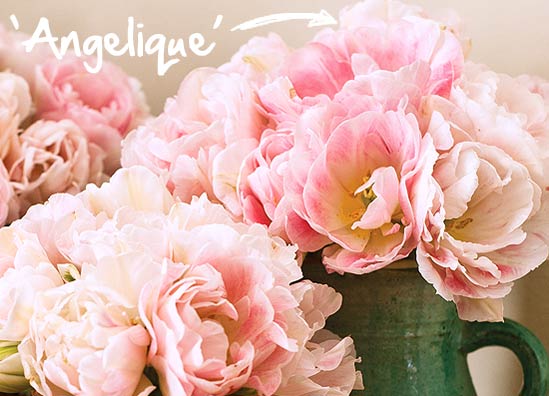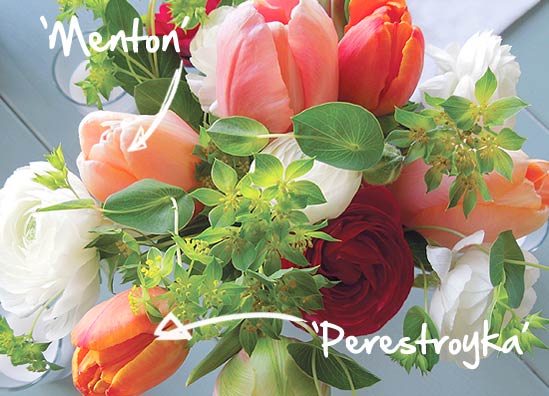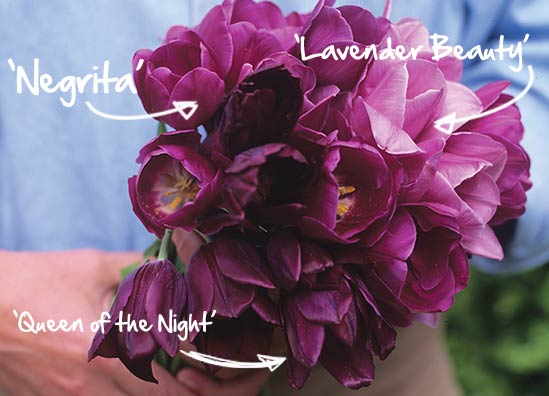Growing your own flowers is a charming way to personalize your wedding and it saves money, too. For a spring wedding it's hard to beat tulips. The color choices are almost endless and they are very easy to grow.
Tulip bulbs are planted in the fall so you'll need to plan in advance. You can grow them in the ground or in containers. Plant plenty for both a lush bouquet and to cover unexpected loss to weather or wildlife. Read more about growing tulips.
If you are growing flowers for your bouquet the most important thing to know is bloom time to ensure the tulips are at their peak on the right day. Depending on where you live and the type of tulip you select you can expect blooms from late March to early may.

Types of Tulips Good for Bouquets
- Single Early – These tulips bloom just after the daffodils in mid-April. The stems are short. Two of my favorites are the orange 'Princess Irene' and violet purple 'Purple Prince'. If you are a dare devil of a bride the two together in a bouquet would be a showstopper.
- Double Early – Double Early tulips have peony-like flowers and short stems. Early blooming. 'Montreux' is a lovely creamy white with just a blush of pink.
- Triumph – Triumph tulips produce a single petaled bloom available in a wide range of colors. Stem length varies by variety. The soft salmon color of 'Apricot Beauty' says wedding to me. Triumph tulips will bloom in the April to May time period.
- Giant Darwin Hybrid – These tulips are probably the best choice for a bouquet. The stems are strong and flowers large. 'Pink Impression' would be gorgeous for a wedding. These bloom mid-April to early May.
- Single Late – This type of tulip offers a broad range of colors and stem lengths - some as tall as 30 inches. Blooms peak in May. The dark purple 'Queen of the Night' would make for a dramatic bouquet.
- Double Late (Peony Flowering) – Also referred to as Peony Flowering these tulips are lightly scented with fully double blooms. Look for them to flower in late April. Consider the light pink and rose colored 'Angelique'.
- Lily Flowering – Gracefully curved petals give Lily Flowering tulips a regale appearance perfect for a wedding. Blooms in May. 'Elegant Lady' produces bi-colored flowers. Pale yellow at the base fades into rose pink along the edges.

With Mother Nature as your florist it's important to have a backup plan, which may include a run to the florist, the farmer's market or to the grocery store for last minute flowers to either add to your homegrown blooms or act as a stand in.
So that you're not too overwhelmed with last minute wedding activities, pick your flowers a day before the wedding. Flowers will hold up in vases or containers in fresh water for two or three days. Assemble the flowers cutting off the blooms at a uniform length of your choice then tie the bundle with a satin ribbon, make a pretty bow and refrigerate the bouquet until it's time to take your march down the aisle!

See you at the wedding!
Good to Know:
Reluctant blooms can be coaxed open with warm water. Place the cut stems in warm water in a warm spot overnight and they should be open the next morning.













